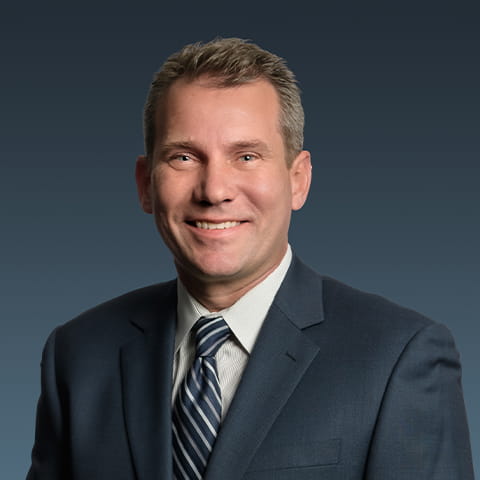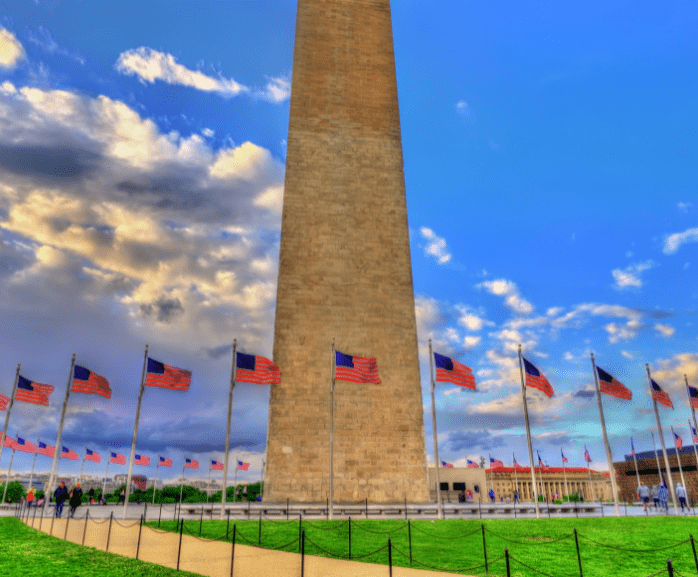Our solutions are tailored to each client’s strategic business drivers, technologies, corporate structure, and culture.
Regulatory shifts and innovation reshape higher education landscape
Discover how new tax laws, executive orders, and AI innovation are transforming higher education. Read more to stay informed and prepared.
Today’s higher education institutions are facing a range of challenges and opportunities that require thoughtful consideration. The overview below outlines recent regulatory developments, emerging trends, and strategic opportunities that are shaping the future of the sector.
Tax provisions and impacts
President Trump’s sweeping domestic policy has many provisions impacting higher education institutions and other tax-exempt organizations. The passage of the One Big Beautiful Bill Act (OBBB or the Bill), signed into law on July 4, 2025, marks a major overhaul in tax legislation.
Below is a summary of the tax provisions that may impact your organization.
- Update to Internal Revenue Code (IRC) Section 4960 Excise Tax on Excess Executive Compensation – Effective for taxable years beginning after Dec. 31, 2025.
- The 21% excise tax on employers that pay over $1 million in compensation or pay an excess parachute payment would remain the same. However, the definition of a “covered employee” is modified to include any current or former employee, not just one of the five highest compensated current or former employees for the applicable tax year.
- Update to IRC Section 4968 Excise Tax on Private College and Universities – Effective for taxable years beginning after Dec. 31, 2025.
- The 1.4% excise tax on applicable educational institutions remains the same if an applicable college or university’s endowment assets are greater than $500,000 and not more than $750,000 per student. The Bill increases the excise tax on net investment income to a graduated rate of:
- 4% if endowment assets are greater than $750,000 and not more than $2 million per student; and
- 8% if endowment assets exceed $2 million per student.
- The modified definition of “applicable educational institution” raises the threshold from “500 or more tuition-paying students during the preceding tax year” to “3,000 or more tuition-paying students during the preceding tax year,” thereby reducing the number of universities subject to the excise tax.
- The definition of “eligible student” includes all students, both domestic and international, thereby striking the exclusion of foreign students that was proposed in the initial House tax bill.
- The expanded definition of “net investment income” now includes interest on institutional student loans and royalties on federally funded intellectual property.
- The 1.4% excise tax on applicable educational institutions remains the same if an applicable college or university’s endowment assets are greater than $500,000 and not more than $750,000 per student. The Bill increases the excise tax on net investment income to a graduated rate of:
- Federal financial aid
- No changes were made to undergraduate subsidized loans, Pell grants, or the Public Service Loan Forgiveness (PSLF) program.
- Parent PLUS loans have been capped at $20,000 per year, with a lifetime total capped at $65,000.
- Parent PLUS loans prior to July 1, 2026 can continue under the previous rules for up to 3 additional academic years.
- Graduate PLUS loans will be eliminated as of July 1, 2026 with only the direct unsubsidized loan program available for graduate education financing. Direct unsubsidized loans are capped at $50,000 per year, with a total capped at $200,000 for professional program students.
- Graduate PLUS loans prior to July 1, 2026 can continue under the previous rules for up to 3 additional academic years.
What does CohnReznick think?
The OBBB makes permanent many of the provisions in the Tax Cuts and Jobs Act (TCJA) of 2017. Many of the provisions in the OBBB have an effective date of Dec. 31, 2025 and will have a significant impact on tax exempt organizations. While the impacts will vary by institution, the OBBB is likely to increase the demand for not-for-profit services at a time when many organizations are facing tighter budgets and reduced funding.
For higher educational institutions, the OBBB broadly looks to reduce federal loans and grants, increasing the need for financial aid. Educational institutions subject to the excise tax on endowment assets face a profound impact on unrestricted budget categories for financial aid, faculty staffing, and overall maintenance and infrastructure costs. Changes to IRC Section 4968 will require many educational institutions to implement or modify tracking of endowment assets per student to ensure compliance with reporting and tax obligations.
There’s still time for not-for-profits to prepare for the impact of the OBBB by reviewing their financial systems and recordkeeping processes, developing fundraising strategies at a time when cuts to federal funding are looming, and adapting to stricter requirements for compliance and reporting.
CohnReznick is here to help organizations navigate the new laws and regulations that have been instituted with the OBBB.
Executive orders and their effects
In 2025, a series of federal executive orders have reshaped the landscape of higher education, sparking legal challenges and major institutional changes. Key directives target primarily Diversity, Equity, and Inclusion (DEI) programs, student loan administration, funding policies, and oversight structures.
DEI initiatives
Two executive orders, EO 14151 and EO 14173, require federal agencies to eliminate DEI-related programs across federal agencies and contractor institutions, claiming these programs are discriminatory. These orders emphasize merit-based hiring and prohibit institutions from implementing DEI initiatives that allegedly violate anti-discrimination statutes. Institutions receiving federal support, including grants and student aid, must now certify the absence of DEI programs that violate anti-discrimination laws or risk losing federal grants, contracts, and student financial aid. Enforcement has intensified, especially for institutions with large endowments, as federal bodies initiate investigations into contractor institutions.
Decentralizing education oversight
EO 14242 initiates decentralization of the Department of Education by reassigning core Department of Education functions, such as student loans and workforce programs, to other federal agencies and state governments. The Treasury Department now oversees student loans, and this shift has led to staff downsizing at the Federal Student Aid office, creating delays and gaps in aid and accreditation processes.
Indirect cost rate caps
Under the Department of Government Efficiency initiative, multiple agencies have introduced a 15% cap on indirect cost rates for federal assistance awards to higher education institutions. This applies to both new and renegotiated awards, and failure to accept new terms may result in award termination. At this point, the courts have prevented the various government agencies from putting this order into effect.
Change in grant compliance for higher education
Taken together, these orders signal a federal push for reduced centralized oversight, minimized DEI programming, and tighter financial accountability, leaving many higher education institutions navigating significant operational uncertainties. Institutions now face new compliance hurdles and financial pressures as they navigate an increasingly politicized educational environment.
As a result of Executive Orders 14151 and 14173 noted above, federal law prohibits grant recipients from engaging in or promoting DEI initiatives as a condition of receiving federal funds. Instead, awards must be based strictly on merit.
All federally funded programs especially those supporting student services, research, and workforce development are currently under review for compliance. Institutions that continue to operate DEI-related programs risk funding delays, revocation of federal funds, and disallowances.
Although legal challenges to these executive actions are ongoing, institutions should be aware that funds may be frozen or subject to sudden changes as courts issue and lift injunctions throughout the litigation process.
What does CohnReznick think?
To avoid costly legal fees, court entanglements, or disruptions in federal funding, institutions should take proactive steps:
- Inventory all federally funded programs and grants – Identify all programs receiving federal support and assess their alignment with the new compliance requirements.
- Evaluate activities and staffing – Determine whether any current activities or personnel roles conflict with the prohibition on DEI initiatives.
- Review institutional policies – Make sure that no policies or procedures reference DEI in a way that could be interpreted as noncompliant with federal guidelines.
- Update internal controls– Strengthen oversight mechanisms to ensure timely identification and correction of any noncompliant programs or expenditures.
Being proactive will help institutions remain in compliance and reduce the risk of financial penalties or funding loss.
Using AI to work smarter in higher education
Artificial Intelligence (AI) is transforming higher education by optimizing operations, reducing risk, and enhancing compliance.
AI-driven automation can streamline administrative functions across finance, HR, legal, and compliance. These efficiencies enable reallocation of human capital allowing organizations to prioritize rote tasks while maximizing efforts on key strategic and operational efforts. When polled at the “Working Smarter with AI session” at the Texas Association of College University Business Officers Conference, most if not all organizations and their CFOs, in the audience, widely agreed this would help drive cost savings throughout the organization, free up time for improved problem solving, and simultaneously streamline operations, such as annual audit planning, financial reporting, compliance, and budgeting, to name a few.
Popular use cases include how AI supports real-time policy monitoring, including compliance tracking and monitoring through natural language processing and anomaly detection rooted in real-time alerts that summarize issues, recommended actions, and assess controls – helping ensure transparency and audit readiness. Taking this a step further, AI fueled predictive risk analytics add insights to drive and enhance strategic agility and inform early warning systems.
What does CohnReznick think?
AI governance is critical. Institutions must implement oversight committees, codify acceptable AI use, and embed human-in-the-loop (HITL) protocols for ethical assurance.
Success stories from large universities include bots managing Freedom of Information Act (FOIA) requests, onboarding, and compliance readiness and financial reconciliations – yielding 40%+ efficiency gains. The suggested roadmap begins with a readiness assessment, followed by pilot programs, integration, and full rollout. Training, transparency, and stakeholder engagement are essential to adoption.
AI is more than a tool – it’s institutional infrastructure. Governed purposefully, it amplifies operational excellence, risk control, and strategic outcomes.
NIL update
As a result of the “House settlement” approved on June 6, 2025 among the NCAA, student-athletes, and the defendant conferences (ACC, Big Ten, Big 12, Pac-12 and SEC), student-athletes can now be paid by schools directly for their name, image, and likeness (NIL), rather than only via NIL deals with third-party boosters and collectives. These school-directed payments, or revenue sharing, will be in addition to scholarships and other benefits student-athletes already receive as well as third-party NIL deals that student-athletes can still enter into.
The settlement was in response to three antitrust claims against the NCAA for restricting student-athlete compensation and upends the Supreme Court rulings of July 2021. As part of the settlement, the NCAA will also pay back approximately $2.8 billion in damages to student-athletes who competed in college since 2016.
What are the new rules?
The defendant conferences are now responsible for designing and enforcing the framework under which the Division I schools will execute the settlement agreement, including the following:
- An annual cap of financial benefits that a school may direct to student-athletes
- The cap in year one is 22.5% of the average revenue among schools in the defendant conferences from media rights, ticket sales, and sponsors, which results in approximately $20.5 million per school. The percentage is expected to increase in each year of the agreement.
- Rules regarding the third-party NIL contracts student-athletes may still enter into, including vetting the purpose of the deals, limiting payment amounts, and requiring reporting
- Enforcement processes (rather than previous enforcement by the NCAA)
- The defendant conferences have established the College Sports Commission to monitor and investigate violations of the rules.
The related hearings that resulted in the settlement occurred in April 2025, which means the defendant conferences had minimal time to develop the new framework and rules by the July 1, 2025 effective date. Division I schools outside of the defendant conferences had the option to opt-in to the new framework and rules.
Other NCAA rules will also have to change as a result of the agreement, including establishment of roster limits rather than scholarship limits and re-alignment of the Division I committee structure.
What does CohnReznick think?
The settlement aims to improve compensation to student athletes, regain control and stability from the NIL booster collective market, and diminish the amateurism model of college athletics.
Schools should be aware of and plan for the resulting implications on their budgets and spending, enrollment practices, compliance-related functions, and institutional policies and procedures. There may be resulting shifts in the college athletic economic model and the allocation of resources among the country’s schools.
There will be a potentially tumultuous transition period as the NCAA, defendant conferences, and all schools figure out both the new framework rules and the related enforcement protocols.
Finally, the NCAA and schools are now looking to Congress to help address the resulting and remaining legal problems, the lack of regulation at a federal level, and conflicts with state NIL laws. Many questions remain unanswered such as those related to student-athletes’ classification as employees and the implications of such, antitrust exemptions for the NCAA, and the duration of student-athlete eligibility.
Looking for the full list of our dedicated professionals here at CohnReznick?
Contact
Let’s start a conversation about your company’s strategic goals and vision for the future.
Please fill all required fields*
Please verify your information and check to see if all require fields have been filled in.
Related services
Any advice contained in this communication, including attachments and enclosures, is not intended as a thorough, in-depth analysis of specific issues. Nor is it sufficient to avoid tax-related penalties. This has been prepared for information purposes and general guidance only and does not constitute legal or professional advice. You should not act upon the information contained in this publication without obtaining specific professional advice specific to, among other things, your individual facts, circumstances and jurisdiction. No representation or warranty (express or implied) is made as to the accuracy or completeness of the information contained in this publication, and CohnReznick, its partners, employees and agents accept no liability, and disclaim all responsibility, for the consequences of you or anyone else acting, or refraining to act, in reliance on the information contained in this publication or for any decision based on it.




















